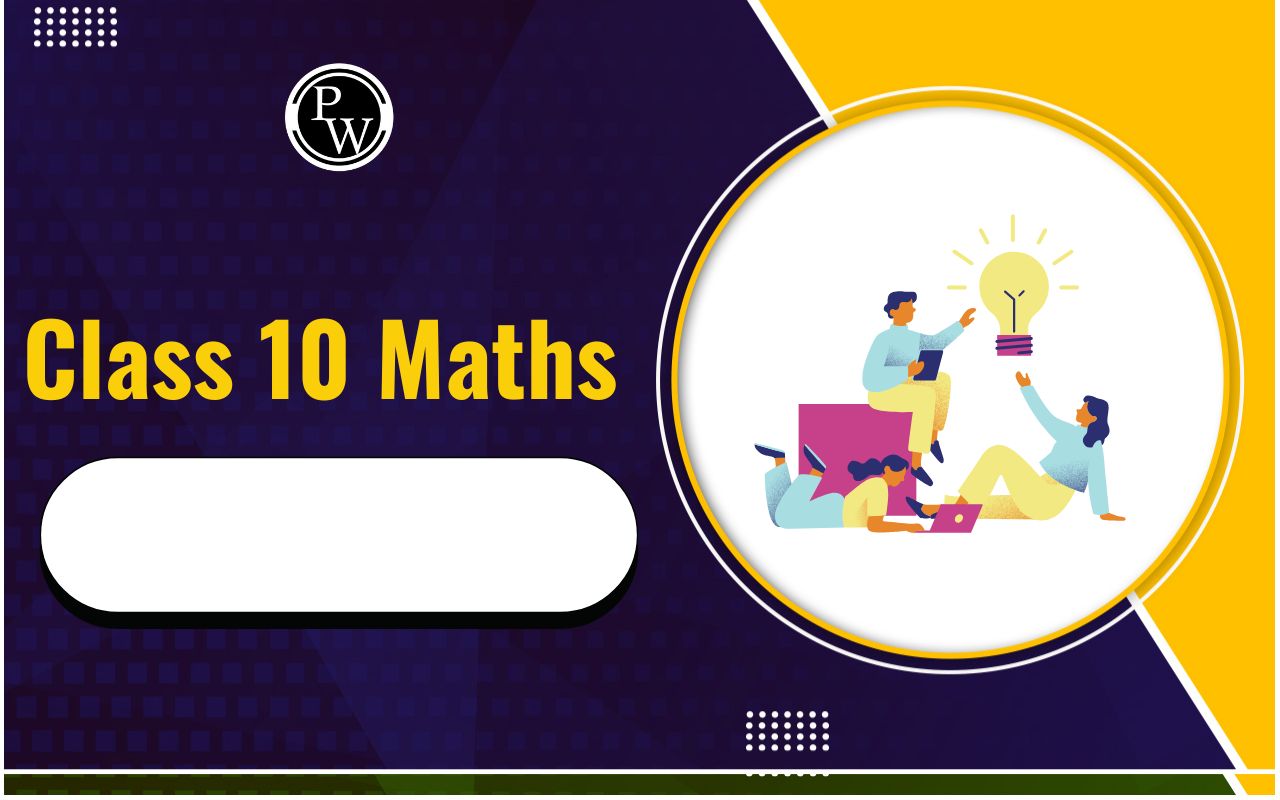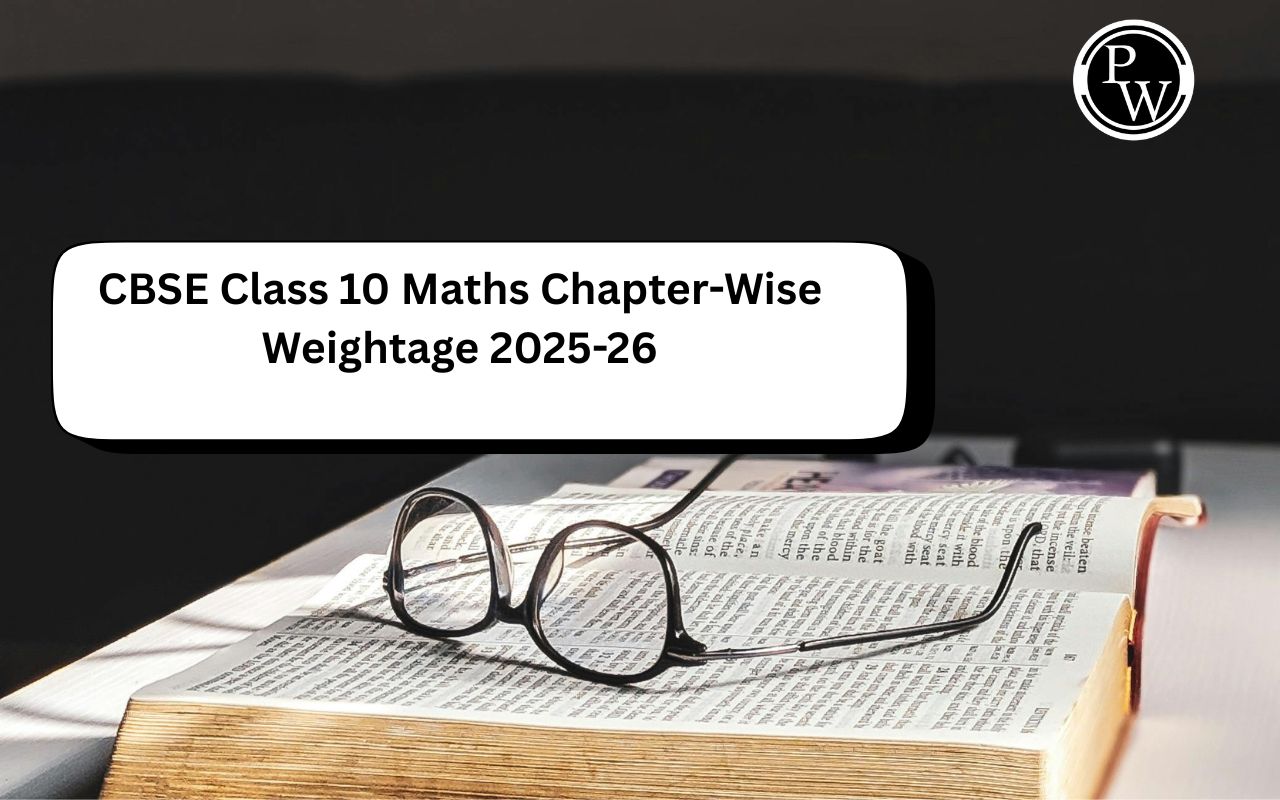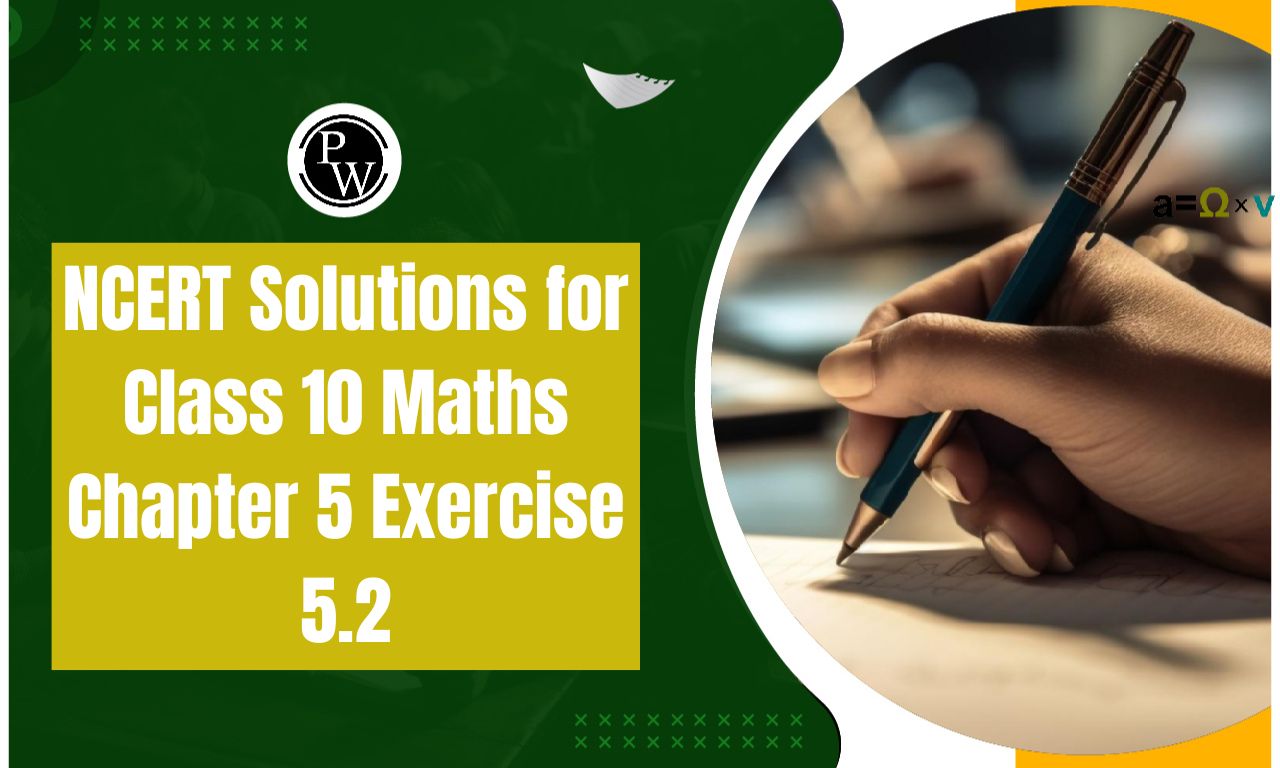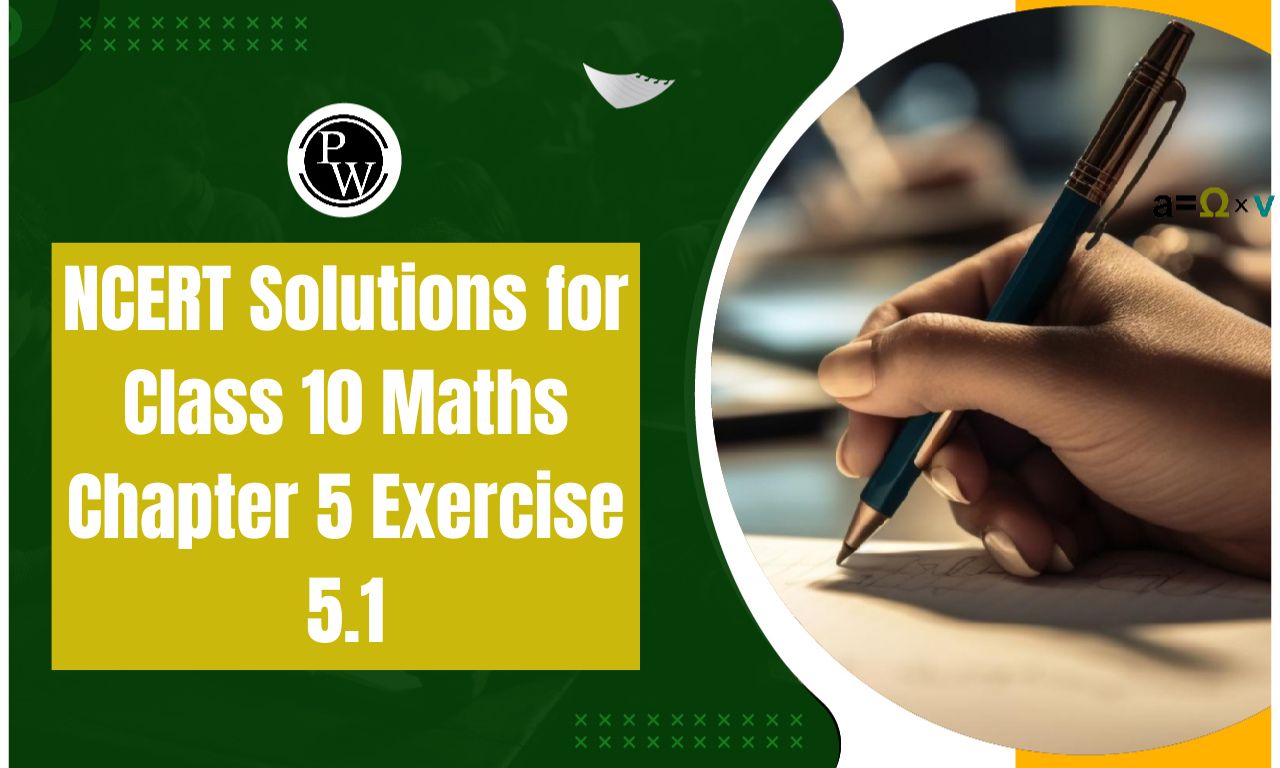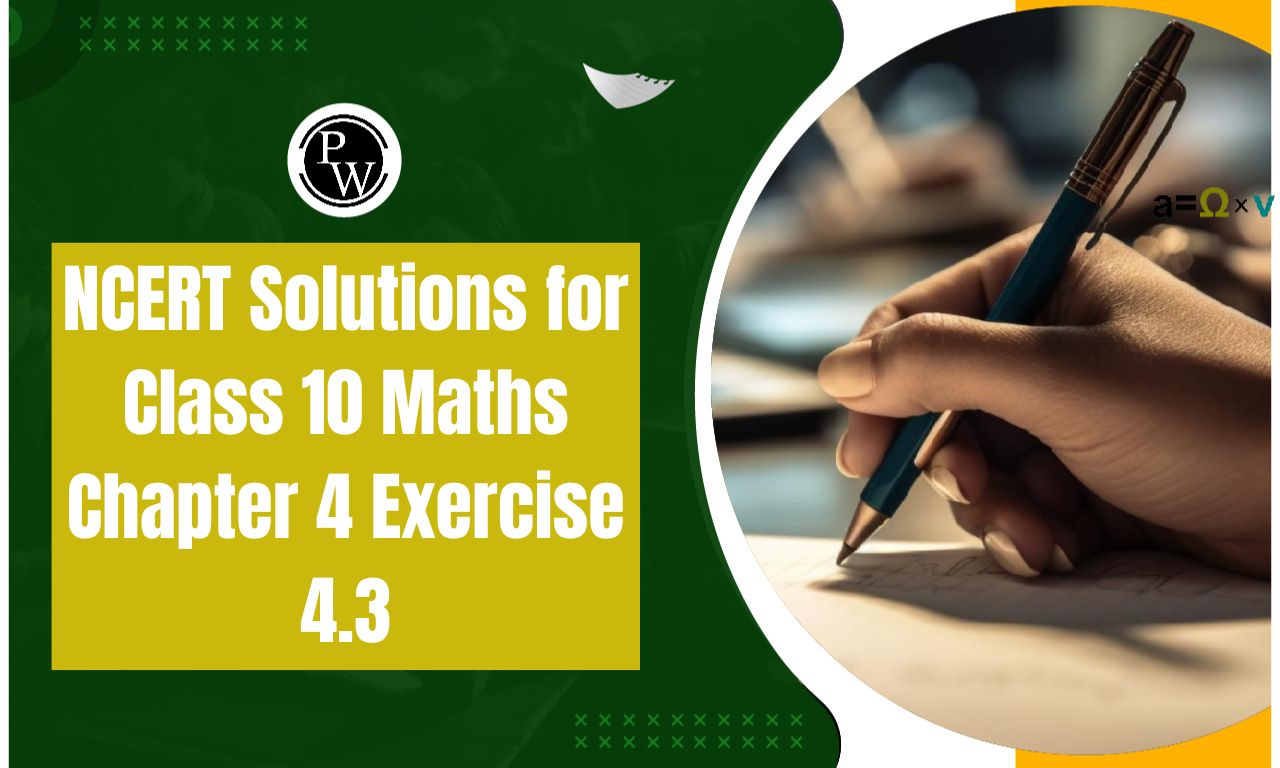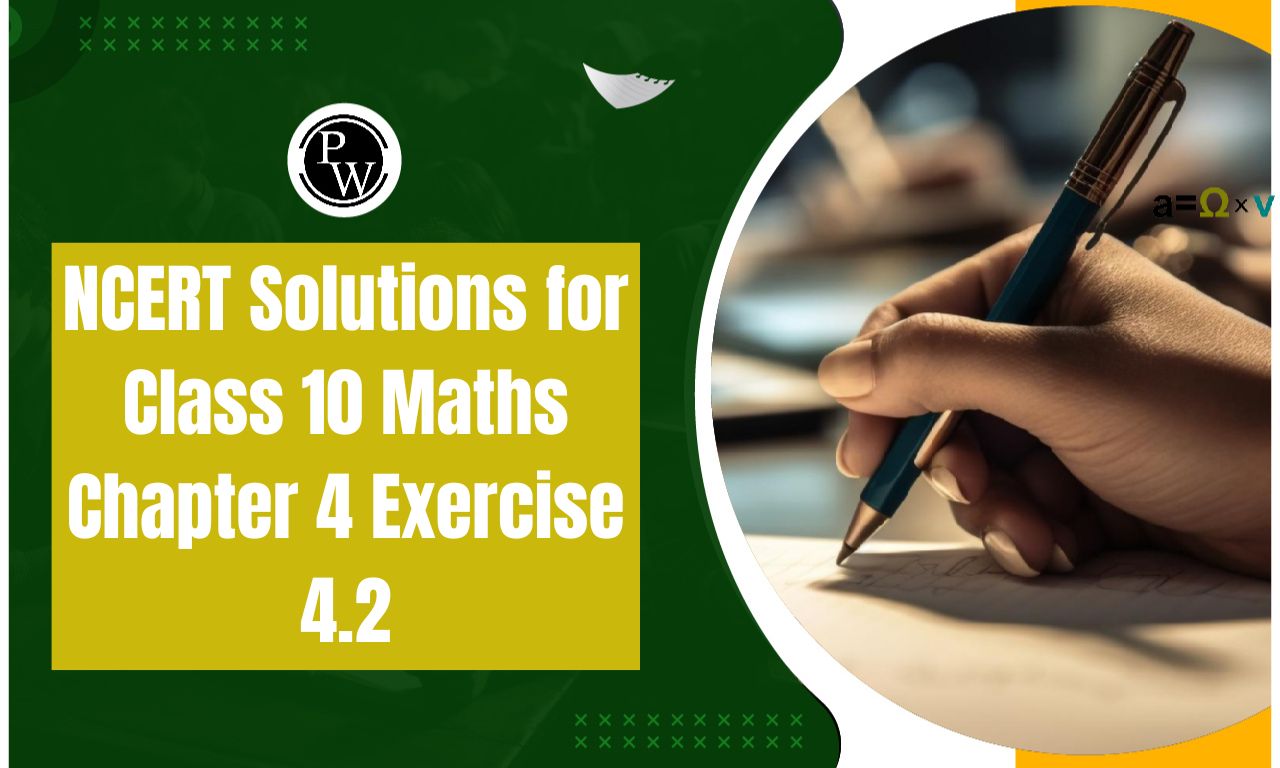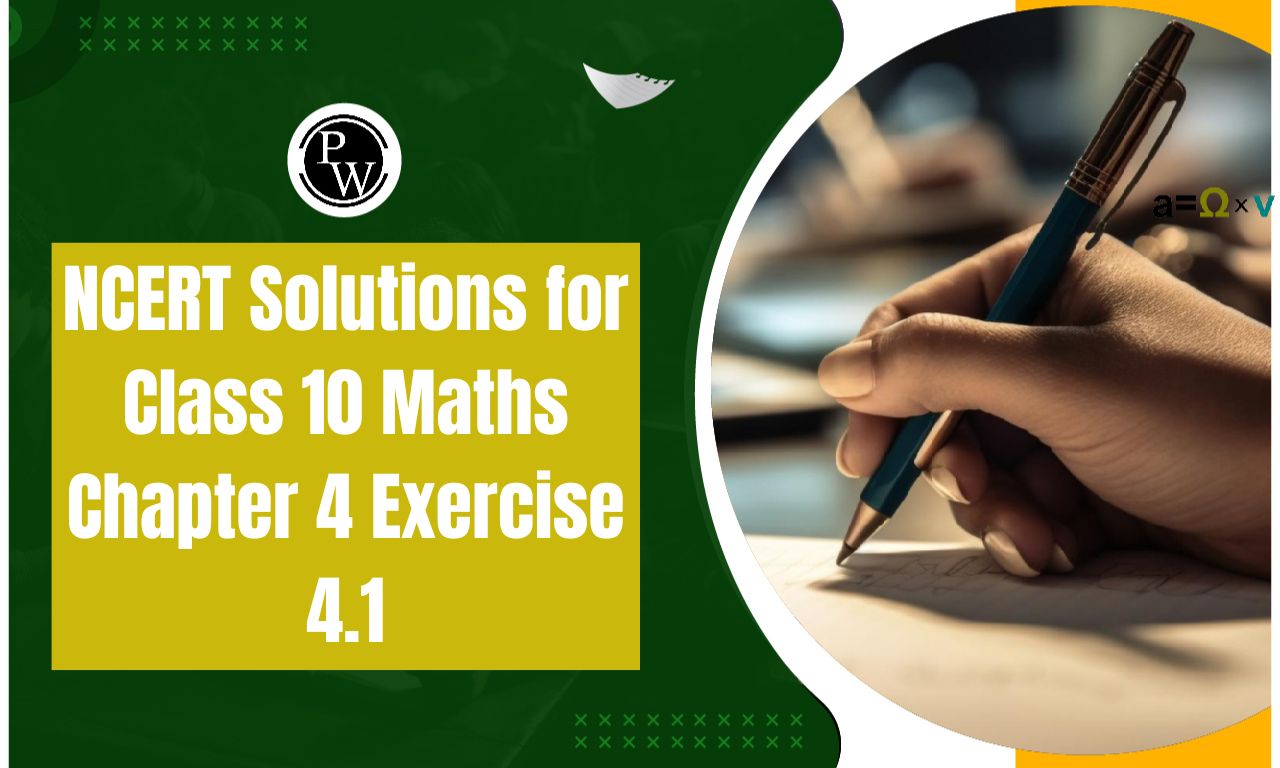
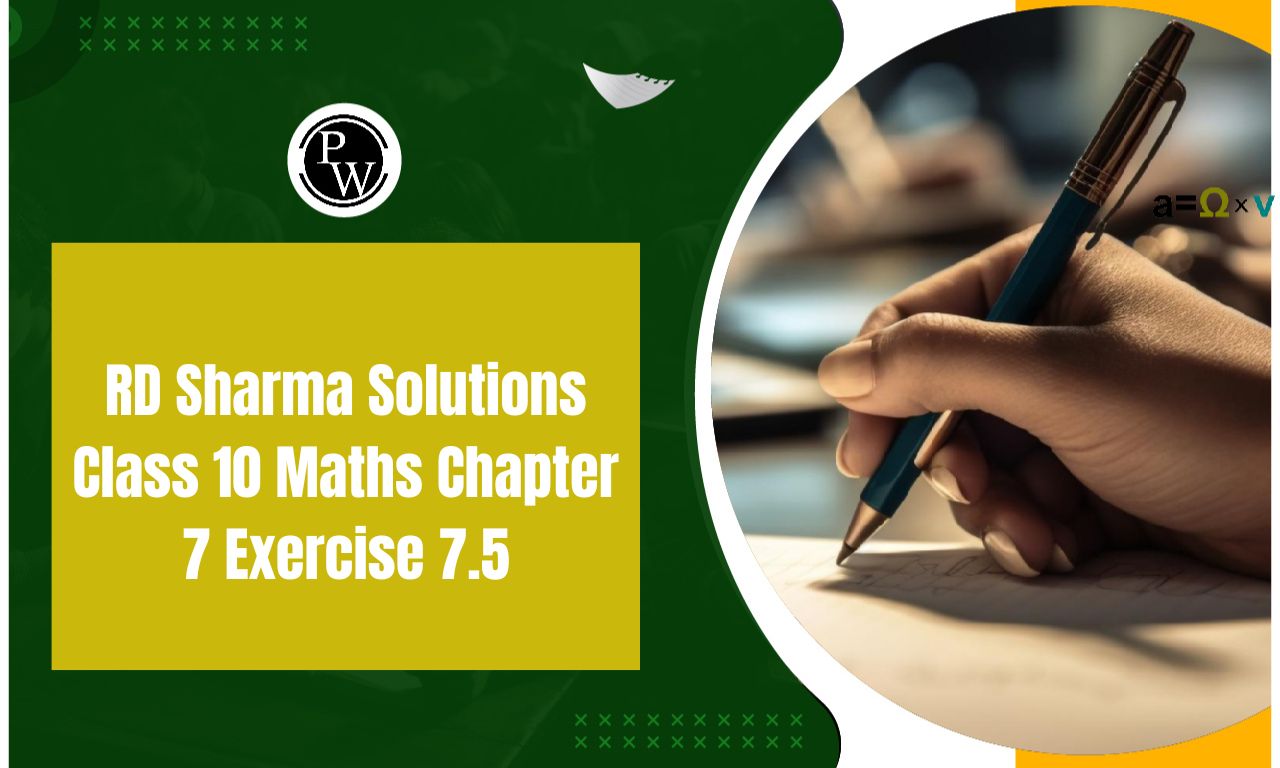
RD Sharma Solutions Class 10 Maths Chapter 7 Exercise 7.5: In Chapter 7, Exercise 7.5 of RD Sharma’s Class 10 Maths, students delve into key concepts in statistics. This exercise focuses on understanding and calculating the cumulative frequency and cumulative frequency distribution.
Students learn methods to organize data effectively and understand frequency distributions, enabling them to handle grouped and ungrouped data. They also gain skills in finding the median, mean, and mode of data sets, with practical examples reinforcing the application of formulas. This exercise is essential for developing a statistical foundation, as it equips students with tools to interpret and analyze data effectively, a crucial skill for various real-world scenarios.RD Sharma Solutions Class 10 Maths Chapter 7 Exercise 7.5 Overview
Chapter 7, Exercise 7.5 in RD Sharma's Class 10 Maths book focuses on Statistics, an essential branch of mathematics that deals with data collection, analysis, interpretation, and presentation. This exercise helps students grasp core statistical concepts such as mean, median, mode, and range, which are foundational for understanding data trends and making informed decisions. The importance of these concepts lies in their widespread application in real-world scenarios, including economics, social sciences, business, and even daily life. Understanding statistics enhances analytical skills, enabling students to interpret data accurately and solve problems methodically, an invaluable skill set for higher studies and various career fields.RD Sharma Solutions Class 10 Maths Chapter 7 Exercise 7.5 PDF
Below, we have provided the PDF for RD Sharma Solutions Class 10 Maths Chapter 7 Exercise 7.5 on Statistics. This resource is designed to support students in understanding and mastering statistical concepts, covering essential topics such as mean, median, and mode calculations. The solutions offer step-by-step explanations to help clarify each exercise problem, making it easier for students to practice and improve their skills in this crucial subject area.RD Sharma Solutions Class 10 Maths Chapter 7 Exercise 7.5 PDF
RD Sharma Solutions Class 10 Maths Chapter 7 Exercise 7.5 Statistics
Below is the RD Sharma Solutions Class 10 Maths Chapter 7 Exercise 7.5 Statistics -1. Find the mode of the following data:
(i) 3, 5, 7, 4, 5, 3, 5, 6, 8, 9, 5, 3, 5, 3, 6, 9, 7, 4
(ii) 3, 3, 7, 4, 5, 3, 5, 6, 8, 9, 5, 3, 5, 3, 6, 9, 7, 4
(iii) 15, 8, 26, 25, 24, 15, 18, 20, 24, 15, 19, 15
Solution:
(i)| Value (x) | 3 | 4 | 5 | 6 | 7 | 8 | 9 |
| Frequency (f) | 4 | 2 | 5 | 2 | 2 | 1 | 2 |
| Value (x) | 3 | 4 | 5 | 6 | 7 | 8 | 9 |
| Frequency (f) | 5 | 2 | 4 | 2 | 2 | 1 | 2 |
| Value (x) | 8 | 15 | 18 | 19 | 20 | 24 | 25 |
| Frequency (f) | 1 | 4 | 1 | 1 | 1 | 2 | 1 |
2. The shirt size worn by a group of 200 persons, who bought the shirt from a store, are as follows:
| Shirt size: | 37 | 38 | 39 | 40 | 41 | 42 | 43 | 44 |
| Number of persons: | 15 | 25 | 39 | 41 | 36 | 17 | 15 | 12 |
Find the model shirt size worn by the group.
Solution:
| Shirt size: | 37 | 38 | 39 | 40 | 41 | 42 | 43 | 44 |
| Number of persons: | 15 | 25 | 39 | 41 | 36 | 17 | 15 | 12 |
3. Find the mode of the following distribution.
(i)
| Class interval: | 0 – 10 | 10 – 20 | 20 – 30 | 30 – 40 | 40 – 50 | 50 – 60 | 60 – 70 | 70 – 80 |
| Frequency: | 5 | 8 | 7 | 12 | 28 | 20 | 10 | 10 |
Solution:
| Class interval: | 0 – 10 | 10 – 20 | 20 – 30 | 30 – 40 | 40 – 50 | 50 – 60 | 60 – 70 | 70 – 80 |
| Frequency: | 5 | 8 | 7 | 12 | 28 | 20 | 10 | 10 |
 = 40 + 160/ 24
= 40 + 6.67
= 46.67
= 40 + 160/ 24
= 40 + 6.67
= 46.67
(ii)
| Class interval | 10 – 15 | 15 – 20 | 20 – 25 | 25 – 30 | 30 – 35 | 35 – 40 |
| Frequency | 30 | 45 | 75 | 35 | 25 | 15 |
Solution:
| Class interval | 10 – 15 | 15 – 20 | 20 – 25 | 25 – 30 | 30 – 35 | 35 – 40 |
| Frequency | 30 | 45 | 75 | 35 | 25 | 15 |
 = 20 + 150/70
= 20 + 2.14
= 22.14
= 20 + 150/70
= 20 + 2.14
= 22.14
(iii)
| Class interval | 25 – 30 | 30 – 35 | 35 – 40 | 40 – 45 | 45 – 50 | 50 – 55 |
| Frequency | 25 | 34 | 50 | 42 | 38 | 14 |
Solution:
| Class interval | 25 – 30 | 30 – 35 | 35 – 40 | 40 – 45 | 45 – 50 | 50 – 55 |
| Frequency | 25 | 34 | 50 | 42 | 38 | 14 |
 = 35 + 80/24
= 35 + 3.33
= 38.33
= 35 + 80/24
= 35 + 3.33
= 38.33
4. Compare the modal ages of two groups of students appearing for an entrance test:
| Age in years | 16 – 18 | 18 – 20 | 20 – 22 | 22 – 24 | 24 – 26 |
| Group A | 50 | 78 | 46 | 28 | 23 |
| Group B | 54 | 89 | 40 | 25 | 17 |
Solution:
| Age in years | 16 – 18 | 18 – 20 | 20 – 22 | 22 – 24 | 24 – 26 |
| Group A | 50 | 78 | 46 | 28 | 23 |
| Group B | 54 | 89 | 40 | 25 | 17 |
 = 18 + 56/60
= 18 + 0.93
= 18.93 years
For group B:
It’s seen that the maximum frequency is 89
So, the corresponding class 18 – 20 is the modal class.
And,
l = 18, h = 20 – 18 = 2, f = 89, f
1
= 54, f
2
= 40
Using the formula for finding mode, we get
= 18 + 56/60
= 18 + 0.93
= 18.93 years
For group B:
It’s seen that the maximum frequency is 89
So, the corresponding class 18 – 20 is the modal class.
And,
l = 18, h = 20 – 18 = 2, f = 89, f
1
= 54, f
2
= 40
Using the formula for finding mode, we get
 Mode
= 18 + 70/84
= 18 + 0.83
= 18.83 years
Therefore, the modal age of Group A is higher than that of Group B.
Mode
= 18 + 70/84
= 18 + 0.83
= 18.83 years
Therefore, the modal age of Group A is higher than that of Group B.
5. The marks in science of 80 students of class X are given below. Find the mode of the marks obtained by the students in science.
| Marks | 0 – 10 | 10 – 20 | 20 – 30 | 30 – 40 | 40 – 50 | 50 – 60 | 60 – 70 | 70 – 80 | 80 – 90 | 90 – 100 |
| Frequency | 3 | 5 | 16 | 12 | 13 | 20 | 5 | 4 | 1 | 1 |
Solution:
| Marks | 0 – 10 | 10 – 20 | 20 – 30 | 30 – 40 | 40 – 50 | 50 – 60 | 60 – 70 | 70 – 80 | 80 – 90 | 90 – 100 |
| Frequency | 3 | 5 | 16 | 12 | 13 | 20 | 5 | 4 | 1 | 1 |
 = 50 + 70/22
= 50 + 3.18
= 53.18
= 50 + 70/22
= 50 + 3.18
= 53.18
6. The following is the distribution of height of students of a certain class in a city:
| Height (in cm): | 160 – 162 | 163 – 165 | 166 – 168 | 169 – 171 | 172 – 174 |
| No of students: | 15 | 118 | 142 | 127 | 18 |
Find the average height of maximum number of students.
Solution:
| Heights(exclusive) | 160 – 162 | 163 – 165 | 166 – 168 | 169 – 171 | 172 – 174 |
| Heights (inclusive) | 159.5 – 162.5 | 162.5 – 165.5 | 165.5 – 168.5 | 168.5 – 171.5 | 171.5 – 174.5 |
| No of students | 15 | 118 | 142 | 127 | 18 |
 = 165.5 + 72/39
= 165.5 + 1.85
= 167.35 cm
= 165.5 + 72/39
= 165.5 + 1.85
= 167.35 cm
7. The following table shows the ages of the patients admitted in a hospital during a year:
| Ages (in years): | 5 – 15 | 15 – 25 | 25 – 35 | 35 – 45 | 45 – 55 | 55 – 65 |
| No of students: | 6 | 11 | 21 | 23 | 14 | 5 |
Find the mode and the mean of the data given above. Compare and interpret the two measures of central tendency.
Solution:
To find the mean: For the given data, let the assumed mean (A) = 30| Age (in years) | Number of patients f i | Class marks x i | d i = x i – 275 | fidi |
| 5 – 15 | 6 | 10 | – 20 | -120 |
| 15 – 25 | 11 | 20 | – 10 | -110 |
| 25 – 35 | 21 | 30 | 0 | 0 |
| 35 – 45 | 23 | 40 | 10 | 230 |
| 45 – 55 | 14 | 50 | 20 | 280 |
| 55 – 65 | 5 | 60 | 30 | 150 |
| N = 80 | Σf i d i = 430 |
 = 30 + 430/80
= 30 + 5.375
= 35.375
= 35.38
Thus, the mean of this data is 35.38. It can also be interpreted that, on average, the age of patients admitted to the hospital was 35.38 years.
It is also observed that the maximum class frequency is 23, and it belongs to the class interval 35 – 45
So, the modal class is 35 – 45 with the Lower limit (l) of modal class = 35
And, Frequency (f) of modal class = 23
Class size (h) = 10
Frequency (f
1
) of class preceding the modal class = 21
Frequency (f
2
) of class succeeding the modal class = 14
= 30 + 430/80
= 30 + 5.375
= 35.375
= 35.38
Thus, the mean of this data is 35.38. It can also be interpreted that, on average, the age of patients admitted to the hospital was 35.38 years.
It is also observed that the maximum class frequency is 23, and it belongs to the class interval 35 – 45
So, the modal class is 35 – 45 with the Lower limit (l) of modal class = 35
And, Frequency (f) of modal class = 23
Class size (h) = 10
Frequency (f
1
) of class preceding the modal class = 21
Frequency (f
2
) of class succeeding the modal class = 14
 Mode
Therefore, the mode is 36.8. This represents that the maximum number of patients admitted to the hospital was of 36.8 years.
Hence, it’s seen that mode is greater than the mean.
Mode
Therefore, the mode is 36.8. This represents that the maximum number of patients admitted to the hospital was of 36.8 years.
Hence, it’s seen that mode is greater than the mean.
8. The following data gives the information on the observed lifetimes (in hours) of 225 electrical components:
| Lifetimes (in hours): | 0 – 20 | 20 – 40 | 40 – 60 | 60 – 80 | 80 – 100 | 100 – 120 |
| No. of components: | 10 | 35 | 52 | 61 | 38 | 29 |
Determine the modal lifetimes of the components.
Solution:
From the data given above it is observed that the maximum class frequency is 61, which belongs to the class interval 60 – 80. So, modal class limit (l) of modal class = 60 Frequency (f) of modal class = 61 Frequency (f 1 ) of class preceding the modal class = 52 Frequency (f 2 ) of class succeeding the modal class = 38 Class size (h) = 20 Using the formula for find mode, we have Mode
Thus, the modal lifetime of electrical components is 65.625 hours
Mode
Thus, the modal lifetime of electrical components is 65.625 hours
9. The following table gives the daily income of 50 workers of a factory:
| Daily income | 100 – 120 | 120 – 140 | 140 – 160 | 160 – 180 | 180 – 200 |
| Number of workers | 12 | 14 | 8 | 6 | 10 |
Find the mean, mode and median of the above data.
Solution:
| Class interval | Mid value (x) | Frequency (f) | fx | Cumulative frequency |
| 100 – 120 | 110 | 12 | 1320 | 12 |
| 120 – 140 | 130 | 14 | 1820 | 26 |
| 140 – 160 | 150 | 8 | 1200 | 34 |
| 160 – 180 | 170 | 6 | 1000 | 40 |
| 180 – 200 | 190 | 10 | 1900 | 50 |
| N = 50 | Σfx = 7260 |
 = 120 + 260/14
= 120 + 18.57
= 138.57
From the data, its observed that maximum frequency is 14, so the corresponding class 120 – 140 is the modal class
And,
l = 120, h = 140 – 120 = 20, f = 14, f
1
= 12, f
2
= 8
= 120 + 260/14
= 120 + 18.57
= 138.57
From the data, its observed that maximum frequency is 14, so the corresponding class 120 – 140 is the modal class
And,
l = 120, h = 140 – 120 = 20, f = 14, f
1
= 12, f
2
= 8
 = 120 + 5
= 125
Therefore, mean = 145.2, median = 138.57 and mode = 125
= 120 + 5
= 125
Therefore, mean = 145.2, median = 138.57 and mode = 125
Benefits of Solving RD Sharma Solutions Class 10 Maths Chapter 7 Exercise 7.5
RD Sharma Solutions Class 10 Maths Chapter 7 Exercise 7.5 FAQs
How to solve a statistic?
What is the purpose of statistics?
What is the range data?
When to use standard deviation?

